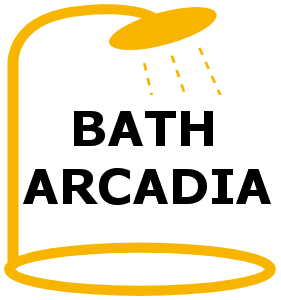A bathroom with no outside access is not a cozy one. If your bathroom is without a window, it is advisable to install proper ventilation.
If there is no normal ventilation, the simple and efficient way to ventilate a bathroom with no outside access is to fit an exhaust fan.
You also have some other options that you can consider, like adding more ductwork and acquiring a floor vent to get additional airflow when using the bathroom.
Proper ventilation will reduce condensation and protect your bathroom from grown-up mold and mildew.
Mold and mildew can lead to serious health issues. Excess mold build-up can lead to respiratory problems like asthma and other skin complaints.
Moreover, poor ventilation affects your health and bathroom by accumulating excess condensation.
As a result, it might damage your bathroom walls and ceiling and cause pill-out paints by growing rampant mold.
Ventilating a bathroom with no outside access can be a difficult job. Fortunately, we have some options that you may apply to aerate your bathroom with no window.
If you have a problem ventilating your basement bathroom, you can read this article on How to Vent a Basement Bathroom with no Outside Access.
Bathroom Specifications
Bathroom specifications should have been considered for picking the right fan for it. For example, half bathrooms do not have a shower space, so it has minimal wetness and humidity.
Therefore, using a recirculating fan in a half bath will be helpful. This fan does not remove air to the outside but transfers air via a filter mechanism that eliminates odors.
If your bathroom is considerably away from the outer wall, in that case, your best choice would be the underneath vent fan.
You should contact HVAC contractors to do this job for you. They will perfectly install such vents within the exhaust point and floor joint.
Then it will run perfectly within the outer wall to the external area for optimal venting results.
When you are a dweller in a tiny studio apartment in a big building, your bathroom has a little exit for ventilation. In that case, you have to consider commercial ductwork.
It will ensure that your bathroom endures dry, clean, and sanitary with one long duct.
In addition, you can create a ceiling to cover the duct vent for an artistic view.
Why is it Necessary to Vent a Bathroom?
It is necessary to vent a bathroom for some reason. If a bathroom does not have air circulation outside, that will lead to dampness and odor. The condensation and humid air can lead to mold growth.
Bathrooms are usually damp places in your house where condensation awaits to accumulate.
It comes from the steam of a hot shower and bath you take daily. And eventually, it can lead to mold growth if there is no proper ventilation in the bathroom.
It is particularly true for small, compact bathrooms.
What are the Advantages of a Bathroom Exhaust Fan?
A bathroom exhaust fan is the most straightforward approach to ensuring that your bathroom meets sufficient air ventilation.
The main objective of installing an exhaust fan are:
- Reduce humidity:
An extractor fan can significantly reduce humidity in your bathroom by pulling the air out. - Eliminate odors:
All that humid, smelly air can reach an unpleasant odor in your bathroom. An extractor fan can help maintain your air refreshed. - Protect from mold appearance:
The steam produced from your hot shower and a hot bath can create a more damaging problem by accumulating condensation and leading to mold growth. A decent airing can help stop it from developing.
- Increase the lifespan of a bathroom:
Mold and humidity are both common enemies of your bathroom. These can cause damage to your bathroom fittings unrepairable. An exhaust fan can prevent such damage. - To reduce airborne contaminants:
Harsh chemicals are frequently used in the bathroom to keep it clean, hygienic, and healthy. These chemical particles can circulate through the air and can be harmful to inhale.
- Protect mirror fog:
Concentrating fog on the mirror after a shower is not fearful but annoying. Turning on an extractor fan while showering can reduce the foggy effect on the mirror.
- Reduce rust:
A bathroom with no outside access can be full of humidity in the air. The condensation may lead to rusting on metal surfaces, which is unpleasant. Condensation causes rust; an exhaust fan can reduce the condensation in the room by removing humid air outside; and protecting against rusting metal surfaces.
If your bathroom is too humid, you will find an exhaust fan handy; water and vapor are dispersed around the room, creating damage.
An exhaust fan will remove the air’s moisture, odor, and contaminants.
Installing an extractor fan is a good idea to reduce polluted air from your bathroom.
How To Vent a Bathroom Without a Window
If you decide to put an additional bathroom vent in your bathroom, it might not be a sincere task to do on your own.
To install vents, you should consult and hire a professional to do that job properly.
It is not very simple or likely to do this job alone. If you try to do this independently, it also may go against building codes.
There are various venting options available to select from.
Although you might not have the alternative to doing this on your own, you have some opportunities to choose to attach a small breathing area to your bathroom.
Primary Instructions for Bathroom Fans
Before examining bathroom ventilation challenges and solving that problem, you must know some primary features implemented in bathroom fans.
Knowing these details will help you to make the best choice for bathroom ventilation.
Select the Right Bathroom Fan
Every bathroom needs some ventilation source. That may be in the form of a bathroom exhaust fan or an openable window.
If your bathroom has no outside access, there is a very high possibility the building codes in your city recommend a bathroom vent fan.
These vent fans draw humid air and odors out of the bathroom. You will find various types of vent fans.
You need to select a fan; that will serve your purpose best.
It will help if you choose the right fan to fit your bathroom to ensure proper ventilation. It should consider the following factors.
Consider Special Features
A bathroom fan that combines with a light reduces the necessity of adding extra ceiling fittings.
A fan with a speed regulator gives you some control over its speed.
And it helps you achieve more exhaust power when creating more humidity while taking a hot shower or bath.
You can buy a fan outfitted with a humidistat to ensure the fan runs when needed.
This feature automatically lets the fan turn on when a particular moisture level is detected.
Choosing a fan with special features may help you manage challenging ventilation conditions.
Fan Size:
Bathroom fan size is measured by their capacity to move a particular air volume at one given time.
It is measured in cubic feet per minute (CFM). That means how many cubic feet of air it can move in one minute.
By principle, for every square foot of floor space in your bathroom, the fan requires 1 CFM of capacity.
A standard USA bathroom needs a ventilation fan with 40 CFM capacity for significant performance.
You must determine the frequency of bathroom use carefully, aside from the bathroom space.
If the bathroom uses multiple people, you need a higher capacity CFM for the fan.
Also, consider the time of running the tub to get an accurate fan size.
Attach A Ceiling Vent
Attaching a ceiling vent or a ceiling fan is a good option for the way out of humidity and steam from the bathroom up across the roof.
It is an effective method to maintain your bathroom moisture level.
Add a Floor Duct Vent
Are you searching for something more protected than a ceiling vent? Then the floor duct vent will be suitable for your bathroom.
If you install a floor duct vent in your bathroom, it will be even hard to notice.
And you can install it next to your toilet. These floor vents will remove the air under the floor and outside.
Floor duct vents are perfect for the bathroom, which has a ceiling that is unsuitable for a ceiling vent.
Expand Existing Ducts
Is your bathroom already fitted with exhaust ventilation? But you are not getting enough ventilation to get rid of excess moisture.
In that case, you need to install some additional ductwork with the existing system in different parts of your bathroom to improve airflow outward.
To do so, you need the assistance of professionals. They will do this job for you if it needs to add more venting.
Use Metal or PVC Pipe for Ductwork
Do not use a cheap plastic duct for a bathroom ventilation fan. It may easily crush or tear up and will block airflow.
Use unbreakable metal or PVC plastic pipe for your bathroom vent duct.
It will ensure the best and most long-lasting performance of your bathroom fan.
Use a Regular Fan
If you are unwilling to use an expert to install ventilation in your bathroom and need more fresh airflow, you can temporarily fit a regular fan in your bathroom area.
It will help move the air in the room. To get the maximum result from using it, set it back in the bathroom next to the shower, and make the direction to the door.
Keep the door slightly open when the fan is working. It will push the moist air out of the bathroom.
This moist air will enter your home. If your home humidity level is high, open the windows and let the air go outside.
Some Potential Problems
Despite all this, there are some potential catches if bathroom ventilation is poorly done inside an attic.
- Rampant mold growth
- Moistened bathroom air absorbed inside the home
- Extra humidity invites germs and insects
- Wood decomposes and architectural decay
Summary
A bathroom with no outside access is a bit difficult to ventilate.
Here is a review to do that:
- Turn on an extractor fan
- Be convinced that the exhaust fan is working perfectly
- Use a general fan to airflow.
- Wipeout extra humidity from the walls
- Use a dehumidifier if needed
- Keep open windows in your house for some time
- Be sure that your door has a cut
This article provides valuable guidance to help keep the bathroom air fresh and clean.


